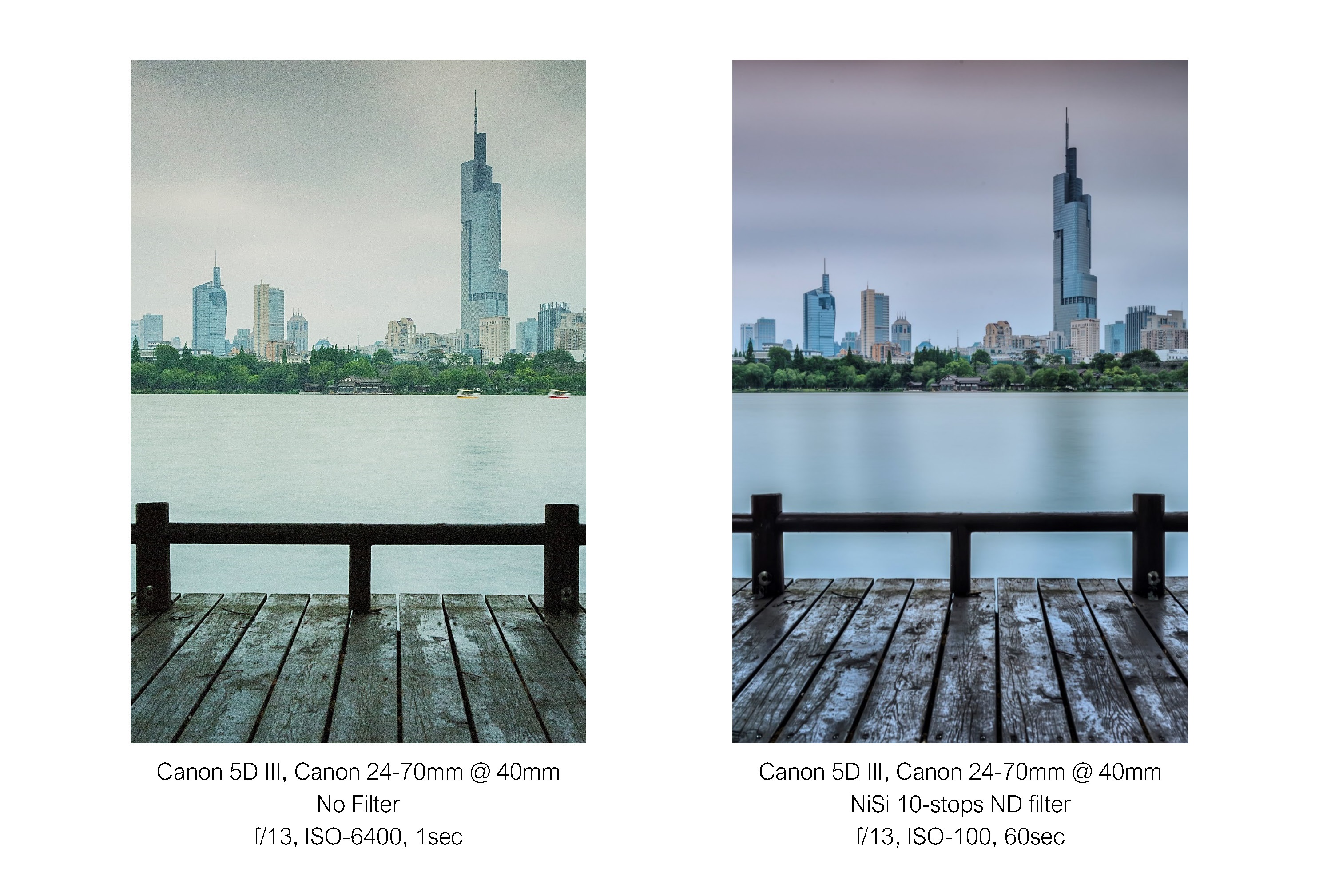Here’s a quick way you can figure out the precise exposure within a second when using 10-stops ND filter.

First, take a test shot by setting your camera to M mode (manual mode), ISO-6400, 1 second (Image 2a). Then check the overall exposure by viewing the histogram to make sure the test shot is well exposed. If yes, follow by setting your camera to B mode (bulb mode), ISO-100, 1 minute, with the same aperture used in the test shot.

What if the test shot of 1 second is under-exposed? Adjust the exposure time to 2 seconds at ISO-6400, which correspond to 2 minutes at ISO-100; 3 seconds correspond to 3 minutes; so on and so forth. Same for non-integer, for instance, 1.5 seconds correspond to 1.5 minutes. What if it is over-exposed? Adjust the exposure time to 0.5 seconds at ISO-6400, which correspond to 0.5 minutes at ISO-100.
The principle of “1 second exposure” technique is simple if you understand the principle of exposure triangle. There are 6-stops decrement from ISO-6400 to ISO-100 (6400 > 3200 > 1600 > 800 > 400 > 200 > 100). 6-stops decrement results in 26 = 64 times decrease in exposure. On the other hand, 1 minute is 60 times longer than 1 second. Therefore, 60x increase in exposure time compensate 60x decrease in ISO sensitivity.
What if the exposure time is way longer than desired, let’s said 10 minutes and you want to make it shorter? You can easily play around with ISO or aperture. For example, if the exposure time is 10 minutes at ISO-100, you can decrease the exposure to 5 minutes at ISO-200 or 2.5 minutes at ISO-400; if the exposure time is 10 min at f/16, you can decrease the exposure to 5 minutes at f/11, or 2.5 min at f/8.
“1 sec exposure” technique can also be used with 6-stops ND filter in low light condition when it is impossible to estimate the exposure with camera metering, especially the resulting exposure time is more than 30 seconds for most camera. It can also be use on higher strength ND filters, like 15-stops ND filter.
You can even use “1 sec exposure” technique in night photography when no ND filter is used. Most people are still practicing trial-and-error to obtain the perfect exposure in night photography.

